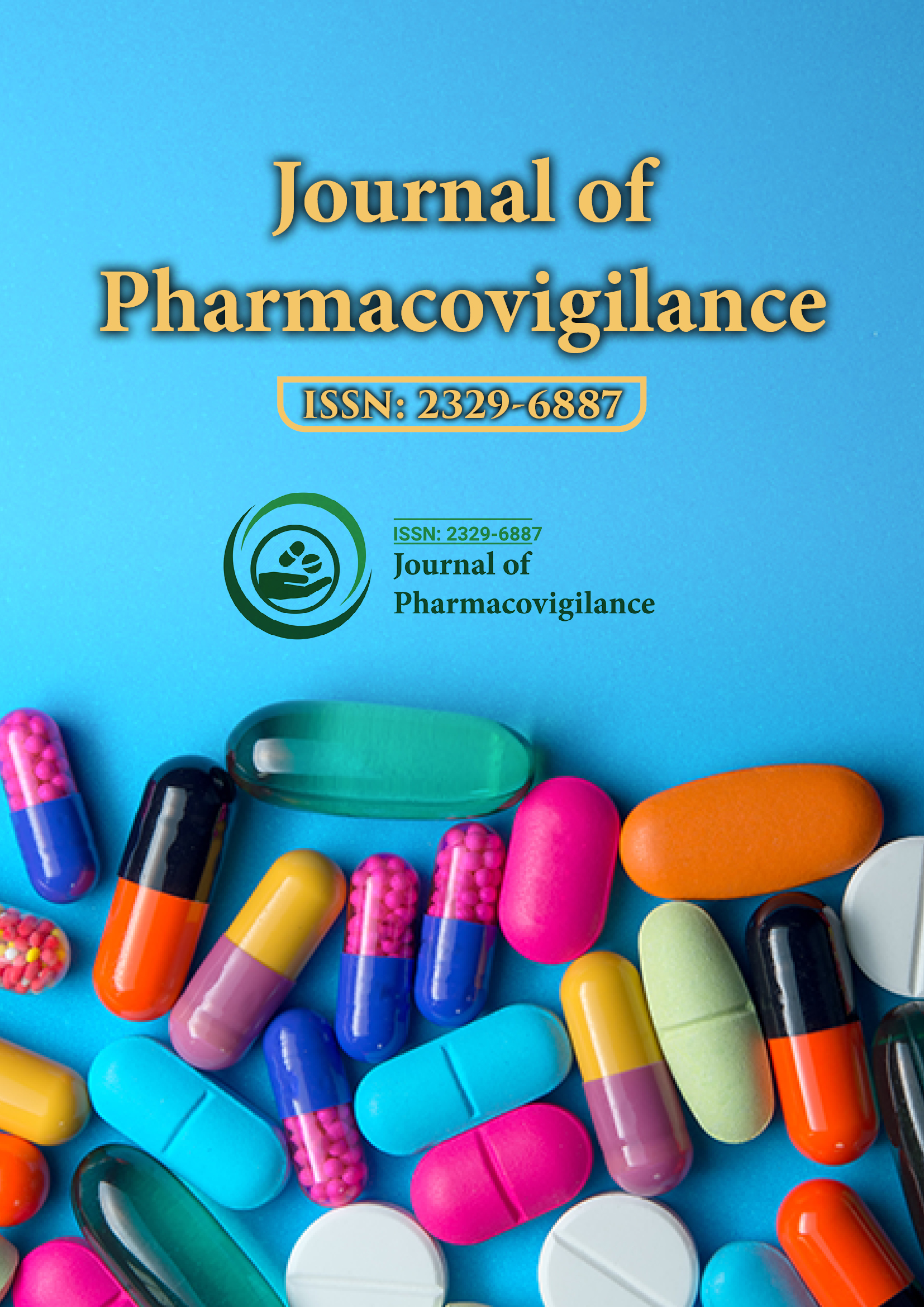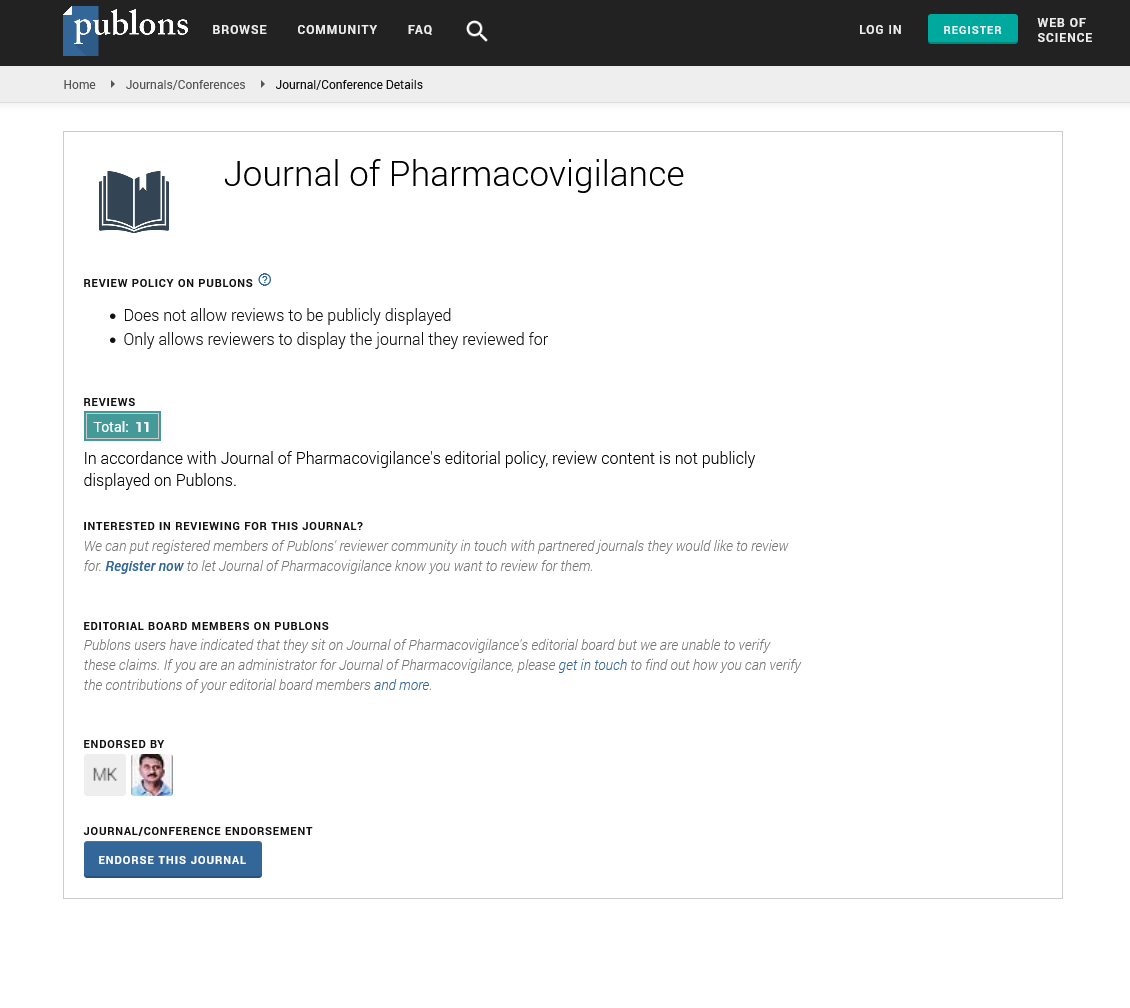Indexed In
- Open J Gate
- JournalTOCs
- The Global Impact Factor (GIF)
- RefSeek
- Hamdard University
- EBSCO A-Z
- OCLC- WorldCat
- Publons
- Euro Pub
- Google Scholar
Useful Links
Share This Page
Journal Flyer

Open Access Journals
- Agri and Aquaculture
- Biochemistry
- Bioinformatics & Systems Biology
- Business & Management
- Chemistry
- Clinical Sciences
- Engineering
- Food & Nutrition
- General Science
- Genetics & Molecular Biology
- Immunology & Microbiology
- Medical Sciences
- Neuroscience & Psychology
- Nursing & Health Care
- Pharmaceutical Sciences
Perspective - (2025) Volume 13, Issue 1
Pharmacogenomics in Adverse Drug Reaction Prediction
Mervin Callister*Received: 03-Mar-2025, Manuscript No. JP-25-28638; Editor assigned: 05-Mar-2025, Pre QC No. JP-25-28638 (PQ); Reviewed: 19-Mar-2025, QC No. JP-25-28638; Revised: 26-Mar-2025, Manuscript No. JP-25-28638 (R); Published: 02-Apr-2025, DOI: 10.35248/2329-6887.25.13.506
Description
Adverse Drug Reactions (ADRs) remain a significant concern in clinical practice, leading to patient morbidity, mortality, and increased healthcare costs worldwide. Despite rigorous drug approval processes, many adverse effects are only detected post-marketing when a drug is exposed to a genetically diverse population. Pharmacogenomics, the study of how genetic variations influence drug response, has emerged as a transformative approach in predicting and preventing ADRs. By identifying genetic markers that predispose individuals to specific drug reactions, pharmacogenomics enables the tailoring of pharmacotherapy to individual genetic profiles, thus enhancing drug safety and therapeutic efficacy.
The variability in drug metabolism, efficacy, and toxicity is often rooted in polymorphisms of genes encoding drug-metabolizing enzymes, transporters, and drug targets. Cytochrome P450 enzymes, particularly CYP2D6, CYP2C9, and CYP2C19, are well-known for their role in drug biotransformation. Genetic polymorphisms in these enzymes can classify patients into poor, intermediate, extensive, or ultra-rapid metabolizers. For instance, poor metabolizers of CYP2D6 may accumulate toxic levels of drugs such as codeine or nortriptyline, increasing the risk of adverse effects, while ultra-rapid metabolizers may experience subtherapeutic effects. The clinical utility of pharmacogenomic data becomes evident when used to predict such outcomes and guide drug choice and dosage.
In addition to drug metabolism, pharmacogenomics also helps elucidate variations in drug targets and immune response genes that are implicated in severe ADRs. A notable example is the HLA-B57:01 allele, which is strongly associated with hypersensitivity to the antiretroviral drug abacavir. Pre-prescription screening for this allele has become a standard of care in HIV management, virtually eliminating the occurrence of this potentially fatal reaction. Similarly, HLA-B15:02 is linked to Stevens-Johnson syndrome and toxic epidermal necrolysis in response to carbamazepine, particularly in individuals of Asian ancestry. These genetic associations underscore the importance of population-specific pharmacogenomic screening to enhance drug safety.
The integration of pharmacogenomic data into Electronic Health Records (EHRs) and Clinical Decision Support Systems (CDSS) is a key step toward realizing the goals of personalized medicine. When pharmacogenomic profiles are embedded within EHRs, alerts can be generated at the point of prescribing, warning healthcare providers of potential gene-drug interactions. This proactive approach minimizes the risk of ADRs and optimizes therapeutic outcomes. Furthermore, the use of preemptive panel-based genotyping, where multiple pharmacogenes are assessed simultaneously before drug initiation, is gaining momentum. This strategy is particularly beneficial in settings where polypharmacy is common, such as oncology, psychiatry, and geriatrics.
Despite its promise, the widespread adoption of pharmacogenomics in ADR prediction faces challenges. These include the high cost of genetic testing, limited availability of clinical-grade genotyping platforms, and lack of consensus on which gene-drug pairs warrant routine testing. Additionally, disparities in genomic research across populations may lead to inequities in the predictive accuracy of pharmacogenomic tools. To address these gaps, global pharmacogenomics initiatives are underway to generate more inclusive genomic databases and refine genotype-phenotype correlations across diverse ethnic groups.
Ongoing advancements in next-generation sequencing, bioinformatics, and machine learning are also contributing to the development of predictive models that incorporate both genetic and non-genetic factors. These integrative models have the potential to enhance the specificity and sensitivity of ADR risk prediction, moving beyond a one-gene-one-drug paradigm toward a systems-level understanding of drug response. Furthermore, regulatory agencies such as the U.S. Food and Drug Administration (FDA) and the European Medicines Agency (EMA) are increasingly incorporating pharmacogenomic information into drug labels, signaling the growing relevance of this field in clinical pharmacology.
In conclusion, pharmacogenomics holds immense potential in mitigating the burden of adverse drug reactions by enabling individualized drug therapy based on genetic makeup. As healthcare systems move toward precision medicine, the implementation of pharmacogenomic-guided prescribing is expected to become an integral component of clinical practice. With continued research, education, and policy support, pharmacogenomics can significantly contribute to a safer, more effective, and patient-centered approach to pharmacotherapy.
Citation: Callister M (2025). Pharmacogenomics in Adverse Drug Reaction Prediction. J Pharmacovigil. 13:506.
Copyright: © 2025 Callister M. This is an open access article distributed under the terms of the Creative Commons Attribution License, which permits unrestricted use, distribution, and reproduction in any medium, provided the original author and source are credited.

